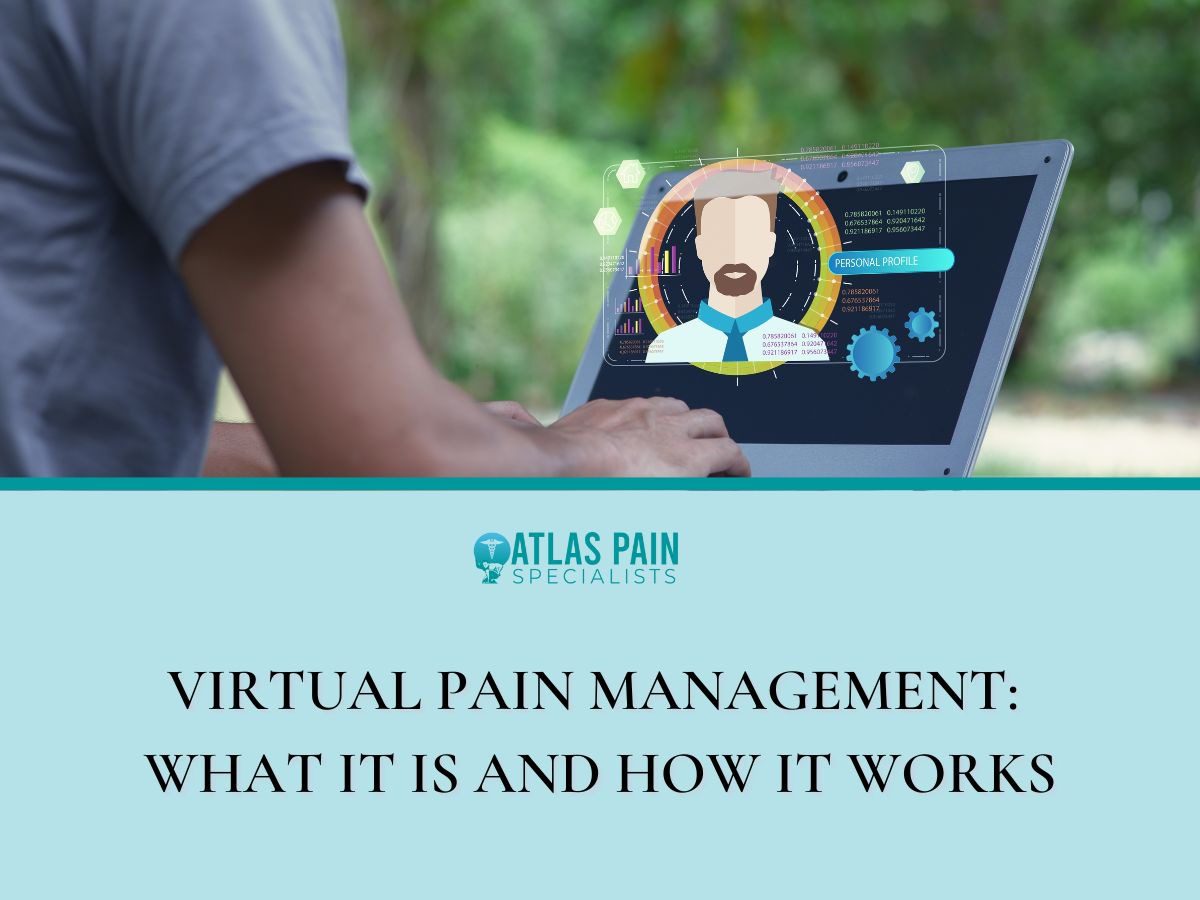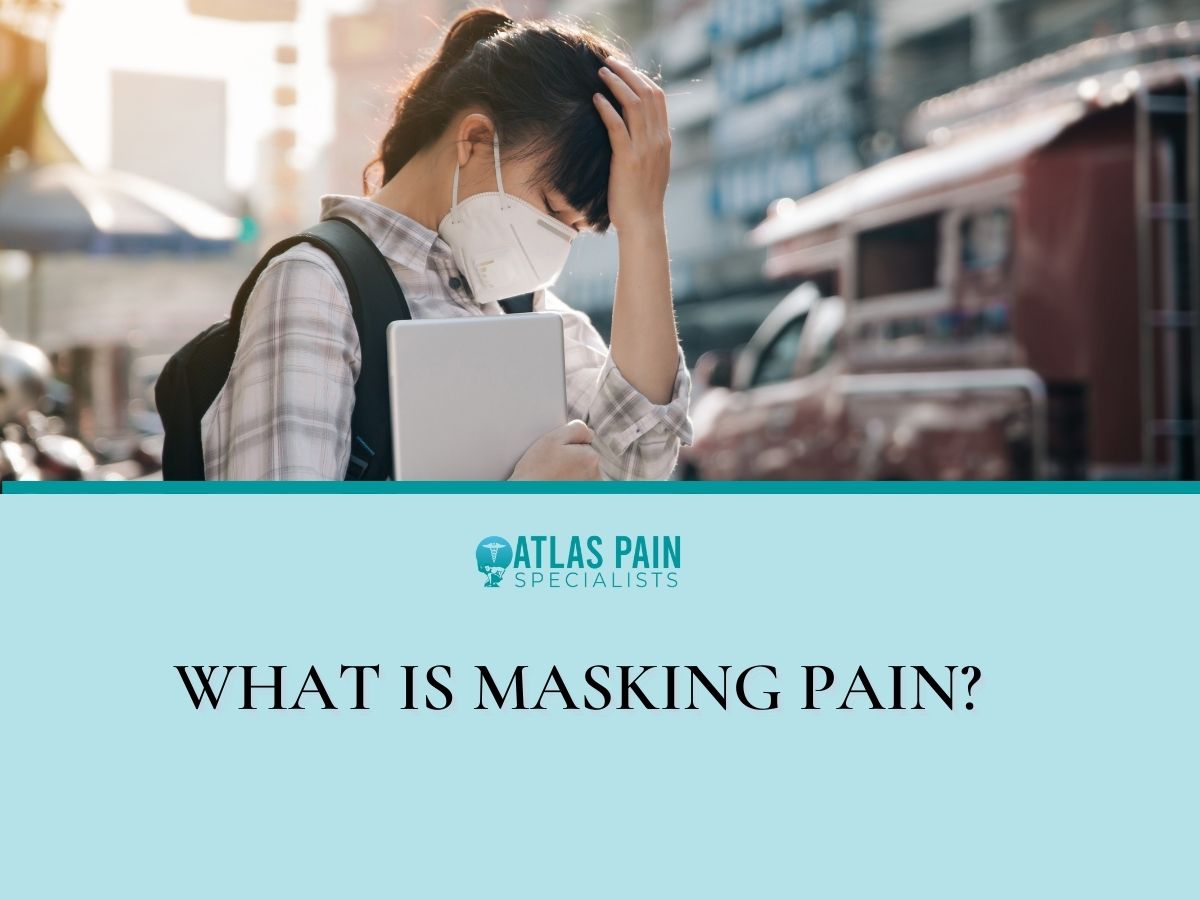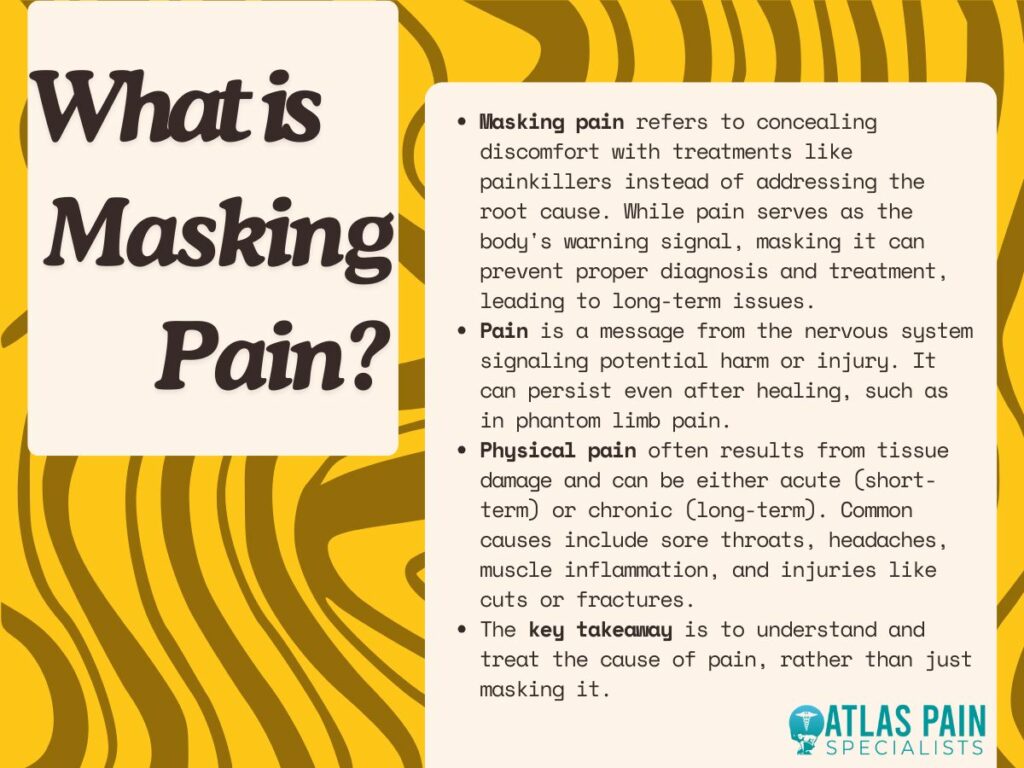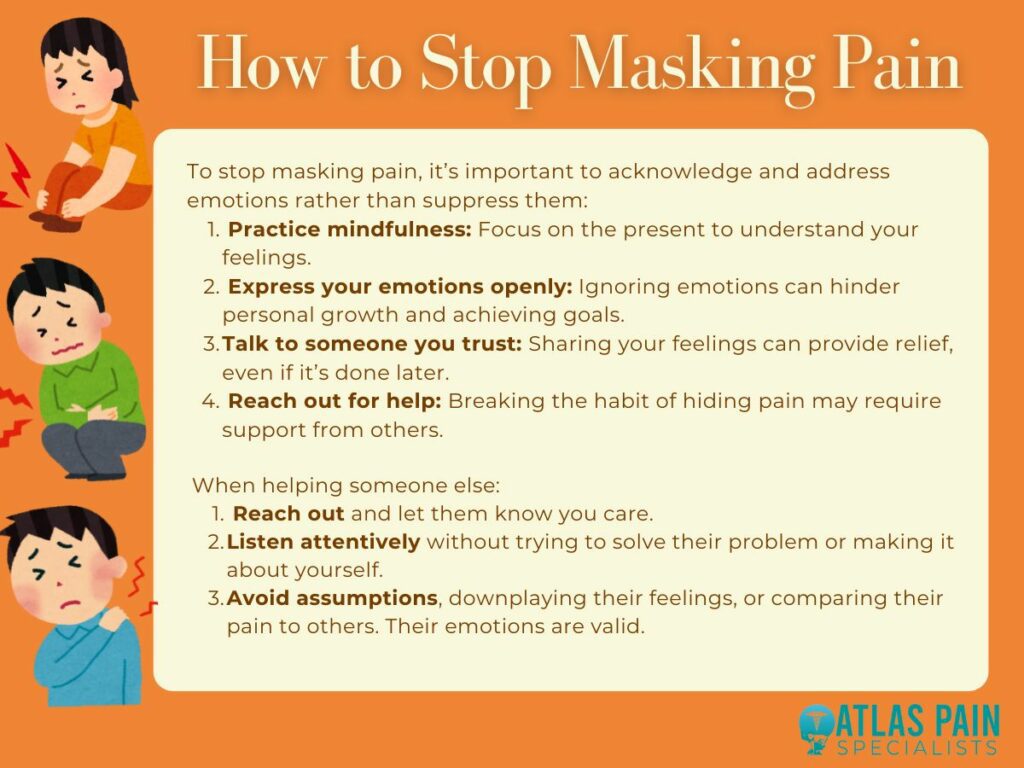

What is Masking Pain?
We’ve all felt a pang of discomfort here and thereafter a hard workout, a long week at work, or just because we’re getting older. As soon as you feel the aches, what is your initial reaction? Is it being treated, or are you masking pain?
That being said, here’s where it becomes tricky. You can’t get to the root of the problem by concealing the symptoms. There are certain situations when a seemingly effortless and uncomplicated condition causes greater agony in the long term.
What is Pain?

The nervous system sends a specific message that results in the experience of pain. Pain is your body’s way of informing you that it has been damaged. This is a positive thing, especially if you’ve been hurt. It’s also helpful in figuring out what’s wrong with you physically.
Pain may persist even when it’s no longer essential. Amputees describe phantom pain in the limbs they have lost.
Different types of pain may help diagnose: persistent, knife-like, radiating, sharp, dull, and recurrent. Analgesics are medications that reduce the sensation of pain. Anesthetics are drugs that block the perception of pain and other unpleasant emotions.
What does Masking Pain Mean?
In the same way, you would cover your face with a ‘mask’ to disguise your emotions, and you can also unintentionally begin masking pain or discomfort.
Understanding where our ‘suffering’ stems is what this article is advocating. The use of painkillers is OK, but we should always strive to figure out why we’re experiencing the discomfort in the first place.
What is Physical Pain?
When someone says something hurts their body, they usually refer to physical pain, which is generally understood to result from tissue damage. Physical pain may be characterized as throbbing, aching, or even burning.
There are two types of physical pain: acute, which lasts for a short time, and chronic, which lasts for a long time.
What are the Common Causes of Physical Pain?
Nociceptor nerves, found in the spinal cord and brain, are responsible for transmitting information about damaged tissue to the central nervous system, where it is perceived as pain.
For instance, a reflex arc in the spinal cord sends a message to the muscles, causing them to contract immediately upon contact with a heated surface.
The list of frequent causes of pain is provided below.
· Sore throats, headaches, and toothaches are the most common complaints.
· Cramps or an upset stomach.
· Inflammation of the muscles results in pain or tension.
· Cuts, burns, and bruising are all possible outcomes.
· Bone fractures.

Masking Pain: Emotional Pain and Physical Pain

If you’ve ever been ill or hurt, you’re likely to be in a foul mood. As a result of experiencing pain, worry and anxiety might be exacerbated.
In the same way, physical pain can make you feel worse mentally, and your mind can also cause pain without a physical source or worsen preexisting pain.
This happens when your pain has an emotional or behavioral source. Psychogenic pain is a term used to describe this occurrence.
Even when no apparent physical reason is still a mystery, your brain may produce pain. Pain memory, a disorder that enables the nervous system to hang on to pain even after an injury has healed, may be to blame, according to some ideas.
Others believe that this discomfort is produced by the brain’s messages being jumbled.
Anxiety disorders, bipolar disorder, depression, and stress are just a few mental health issues that can lead to physical discomfort.
How is Psychogenic Pain Treated?
If you have a history of mental health issues, your treatment may differ from someone who does not. Before diagnosing psychogenic pain, competent health care professionals will thoroughly examine the patient’s physical condition.
After the examination, a professional will follow the steps below:
- Treat the pain- Various treatment options, including physical therapy, medication, and dietary changes, are available to minimize or eliminate pain.
- Address the underlying psychological issue- A therapist and patient may work together to identify the underlying psychological problem and take appropriate action to address it. Acupuncture and occupational therapy are two examples of alternative therapies that health care practitioners may offer.
In some cases, relief may be achieved rapidly, while it may take longer in others.
The stigma and distrust of loved ones, coworkers, co-payers, and even health care practitioners surround the topic of psychogenic pain and other invisible diseases.
How to Stop Masking Pain

You can’t communicate effectively with your loved ones if you keep your feelings bottled inside. It is not easy to resolve differences when people aren’t talking to one other.
If you can’t find a solution to an issue, it’s likely to recur. It’s time to quit covering up your discomfort.
- Practice mindfulness
Observing things as they happen here and now is referred to as mindfulness.
- Openly express your emotions.
Emotions are an integral aspect of your existence. If you ignore them, you risk losing your sense of self and your ability to achieve your objectives.
- Talk to someone you can rely on about your worries.
You may still benefit from talking about your feelings later if you don’t have the opportunity to do so right away.
- Reaching out
You may not be able to break the habit of hiding your feelings independently. Reach out to someone.
Ways to approach a loved one if they are masking their pain
- Take the initiative and get in touch with them.
Reaching out to someone is the first and most crucial step in helping them. Let them know that you care about them.
- Listen attentively to them.
Actively listening to the other person is an essential aspect of offering support. Without preconceptions, you can begin your conversation with confidence.
- Don’t try to solve the problem for the other person.
Misunderstanding and not being cared for are the consequences of attempting to remedy the problem. It diminishes their feelings. It’s almost as if they don’t think they can solve problems.
- Don’t focus on yourself at the moment.
“Tell me about your experience so I can better understand how you feel. If you don’t mind, I’d appreciate hearing more about how you’re feeling. So much is happening to you. How do you feel?” That’s how you say it.
- Don’t make any assumptions or predictions.
Making assumptions or forecasting the future about a person’s condition or sentiments also doesn’t help (which no one can),
- Don’t downplay their feelings.
Saying things like, “You’ll get over it,” “Come on, it’s not that awful,” or “Just brush yourself off and try again” might trivialize the feelings of others.
- Don’t compare their suffering to that of anybody else.
It makes no difference whether someone else has it worse; the person’s emotional agony remains the same. Their anguish is genuine.

About Dr. Sean Ormond



